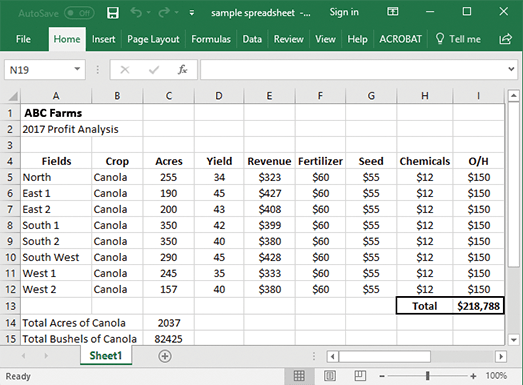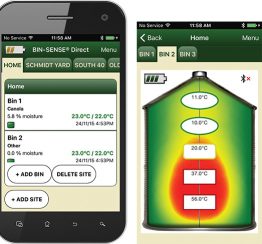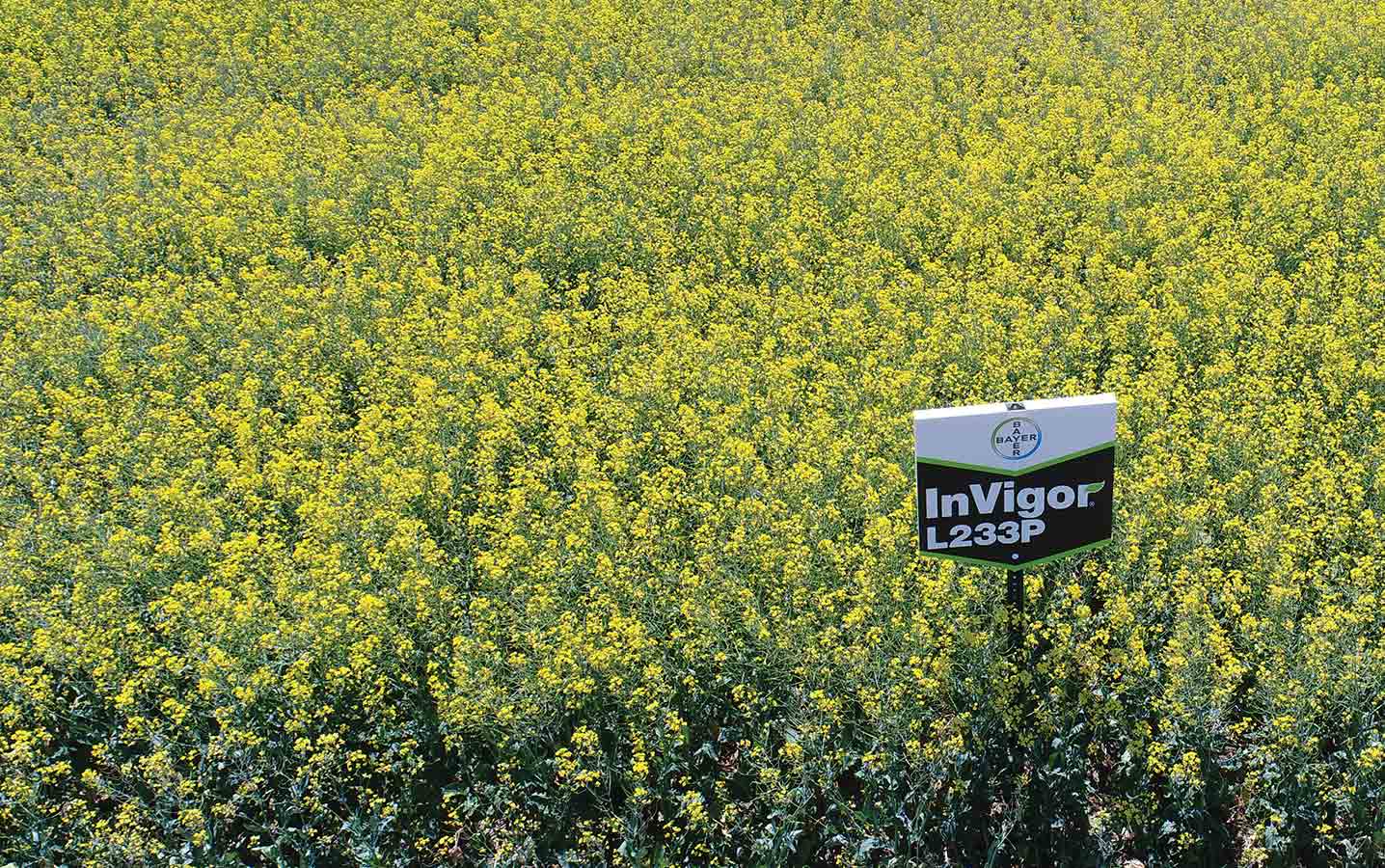Tech for 2018
 Ben Heide
Ben Heide
Boissevain, Manitoba
“As time goes by, I can see us making more and more decisions based on variable yield results across
a field.”
One improvement Ben Heide has his eye on for 2018 is accurate yield data collection. It could be a weigh wagon with a scale. It could be a truck scale in the yard. Or it could be a more accurate yield monitor on the combine. John Deere, for example, has a new yield monitor with extra sensors that recalibrates with every tank full.
“As time goes by, I can see us making more and more decisions based on variable yield results across a field,” Heide says.
The Heides tried variable-rate fertilizer applications last year, and Heide says improved yield monitoring would help confirm the value of this approach. “I think I see a value in it, but to check out ways to make poor parts of the field as good as the best parts of a field will take some accurate yield data,” he says.
For example, he wonders if tile drainage to improve saline areas will provide enough return on investment.
“I can see us trying some tile drainage to find out,” Heide says. Yield data to compare tiled versus untiled areas or to compare results from specific patches before and after tiling will be necessary in making the right decisions for the whole farm.
Speaking of help making the right decisions, Heide says something as simple as mastering the Excel program can be a high-return investment in tech and time. “I’ve always strongly believed in analyzing cost of production,” he says. Figuring out how to use Excel spreadsheets to their fullest can be a simple and low-cost tech solution to improve farm results, he says.

 Jolene and Brennon Strain
Jolene and Brennon Strain
North Battleford, Saskatchewan
“Going with a planter, where depth and placement are more precise, seed mortality would be drastically reduced and more seed will germinate at the same time, resulting in a more evenly maturing crop.”
The Strains just finished putting temperature cables in all their bins. Two years ago, they put cables (which cost about $400 each) into a few bigger bins. That year, they lost a small bin to heating (it didn’t have cables) and they probably would have lost one of the big bins if the cable hadn’t alerted them.
One sensor in the middle of the bin started to move up in temperature. They acted immediately and turned over the bin, but it was a close call. “By the time we had the semi full with the first load, canola had stopped flowing out of the bin,” Brennon says. In the end, they got everything out, cooled down and blended and didn’t lose any value, but if they had relied on probes – which they would have done without the cables – they probably would have missed the temperature rise in the middle.

That was incentive enough to install the Bin-sense Direct cable system. With their current set up, the Strains plug into the bins to check the readings. In time, they hope to upgrade to wireless. “Even with the cables, I probably don’t plug in and check them often enough,” Brennon says. “With the wireless system, which uses a wireless router mounted at the top of the bins, I’d get alerts on my phone every time I came into the yard.”
The other new piece of tech the Strains will buy for 2018 is a Horsch-Anderson high-speed planter with 15” row spacing and section control on each disc. “Going with a planter, where depth and placement are more precise, seed mortality would be drastically reduced and more seed will germinate at the same time, resulting in a more evenly maturing crop,” Jolene says. Their plan is to seed at two pounds per acre, down from their usual four pounds.
“In the end, we will have fewer plants per square metre and we know there are risks with that,” Brennon says. “So we’ll have to monitor a lot more for insects, and if we lose seedlings to frost, there will be a higher chance of having to reseed.” But based on their current calculations, this new technology could pay off fairly quickly.
 Brandon Gibb
Brandon Gibb
Hill Spring, Alberta
The biggest tech change on the Gibb farm for 2018 will be adding a shatter-tolerant canola variety for straight combining.
“We had a challenge in 2017 with uneven maturity. With it being so dry, our low spots were green but canola on higher ground was dry and shelling out,” Brandon Gibb says.
With shatter tolerance, the crop can sit a little longer waiting for higher yielding green areas to mature with lower risk of shatter loss across the rest of the crop.
“We haven’t tried these shatter-tolerant varieties before because we hadn’t seen a variety that matched the yield potential of standard varieties in our area,” he says. “But I have yet to see a bad comment on Twitter about L233P.” So that’s the variety they will try.
In Southern Alberta, farmers “start to panic” if canola is still standing the first week of September, Gibb says, but adds that hot 35°C days in mid August really limit the safe hours for swathing. With shatter-tolerance, they won’t have to swath in August and will be less nervous about standing canola in September.
“Standing canola can handle a September snow better than swathed canola, and we feel that standing canola will have an advantage when we get those big fall winds,” Gibb says. Big winds will mean yield loss either way, but he says swaths blown into wads after a wind take longer to dry down after a rain and can be really hard on the combine.
Jay Ferster
Shellbrook, Saskatchewan
Jay Ferster had three canola bins start to heat on him this past fall. The bins have temperature-monitoring cables set to notify him by text whenever one sensor shows more than a 2°C temperature rise within a 24-hour period. All three bins sent him texts.
“The system worked,” Ferster says. “Without it, we would have lost one bin for sure. The investment paid for itself right there.”
For the worst of the three bins, he emptied the whole bin to cool it down. For the other two, he took out just enough to remove the top where the temperature increase occurred.
Ferster had just installed the cables on 25 of his major bins that usually hold canola. He plans to install them in all bins over the next three to five years. For bins without cables, he checks them the best he can. That includes taking out some canola to cool the core. “Our plan has been to take the tops off all canola bins before New Years every year,” he says.
Right now, Fester’s cabled bins have just has one cable down the middle, even for bins with 30-foot diameters. “It has worked the way we wanted so far,” Ferster says, but he’ll reassess after the spring when the outside air warms up and moisture cycles within the bin change.
Another possible tech investment for Ferster in 2018 is a drill that can seed canola more accurately. His goal is to improve seed survival and keep costs down.
Schyler Raaen
Rolla, British Columbia
Schuyler Raaen, who farms in the Peace River region of B.C., has a goal to address farmland variability in 2018. He wants better production out of areas that hold water, and he’d like to be able to seed those areas earlier. Having more even stands and spending less time dodging low spots would make for better productivity, he says.
Raaen wants to know that crop inputs have good potential on the whole field, which will translate into a better return.
“I believe this to be the best ROI for our operation right now,” he says. “Not that this is new technology, it’s just the next step for our operation.”
The primary issue is land topography and the water management challenges this presents. Raaen is looking at different options to deal with this. “We would need to upgrade our vertical GPS accuracy and purchase the necessary equipment,” he says, which will cost between $160,000 to $200,000.
“Tech support is critical,” he adds. “Unfortunately tech is so proprietary that we are pretty much reliant on the manufacturers and dealers. With communication errors and hardware failures etc., we can’t diagnose these problems ourselves very often.”





